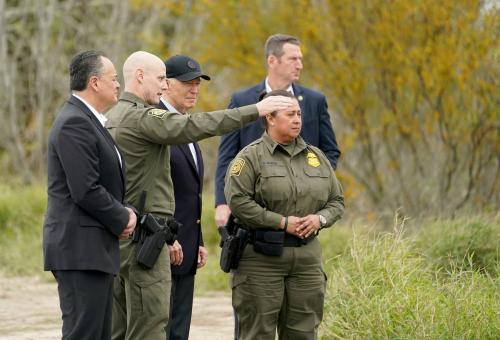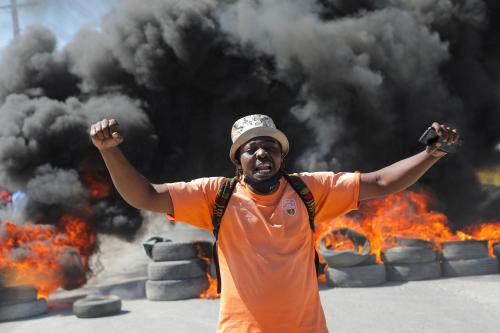The Peña Nieto administration risks dropping the ball in advancing police reform.
Enrique Peña Nieto correctly identified reducing criminal violence as a key priority for his administration. Felipe Calderón’s policy of targeting top capos triggered internal succession battles and sparked competition among drug-trafficking groups.
Although homicides have declined in some parts of Mexico, the Peña Nieto administration risks dropping the ball in advancing police reform and strengthening enforcement and the justice system. In states where violence escalated—Tamaulipas and Michoacán—the administration has played unpersuasive catch-up. In the north where violence has dropped—often because criminal groups established new balances of power—the administration has averted its attention from policing.
In fact, the administration’s policing strategy has shrunk to essentially the same nonstrategic, unprioritized, opportunistic approach of going after capos of the Calderón years. An analysis of how to deter outbreaks of violence after interdiction hits has not been integrated into policy design.
The Peña Nieto administration has emphasized coordination as a remedy for violence, criminality and the lack of rule of law. But policy coordination needs to be married to—not supplant—the development of substantial policy as well as perseverance with institutional reforms.
Well-designed socio-economic approaches are important for addressing some root causes of crime and severing the population’s dependence on criminal groups for public goods. Such programs can help mitigate and prevent crime and strengthen bonds between the population and the state, including enhancing intelligence gathering.
Laudably, the Peña Nieto administration has embraced socio-economic efforts as an anti-crime tool in its flagship polígonos program. The program includes various youth activities, such as sports and music; substance abuse reduction; women-support programs; and legal job opportunities and social services and infrastructure expansion in high-risk barrios. But its components are often nebulous. The unspecified mechanisms of projects for reducing crime complicate evaluation and monitoring and allow for pork-barrel, ineffective, feel-good handouts that waste resources. The program also ignores the crucial links among the social interventions, the community and local law enforcement.
Sharpening Mexico’s anti-crime policies entails:
• The interdiction posture should target the most dangerous groups first to promote stability and violence reduction at the local level. Targeting plans must be based on robust assessments of how to prevent post-interdiction violent eruptions, such as by prepositioning security forces. Interdiction should shift from capos to targeting the middle levels of drug trafficking groups because arrests of numerous middle layer criminals reduces operational capacity and the ability to supply new leadership.
• The administration must focus on areas where violence has declined, particularly if it is a result of a local narcopeace. These areas are ripe for working with local authorities to deepen police reform, strengthen criminal investigations and effective prosecutions, reducing a sense of police vulnerability, judicial weakness and impunity.
• Beyond launching the Gendarmeria Nacional, police reform needs a new push, including persistently combating corruption.
• The logic of each polígonos project should be clarified. Rather than discrete efforts, the projects need to be better connected with each other to achieve wider coverage in risky neighborhoods and be integrated with local law enforcement strategies.
This piece was originally published in Expansión Magazine’s Annual English Edition, October 2014.



Commentary
Op-edImproving Anti-Crime Policy in Mexico
October 27, 2014